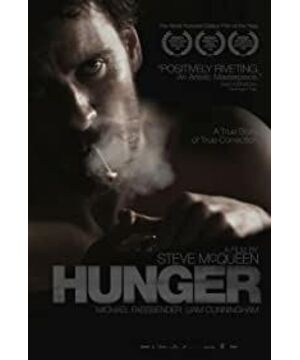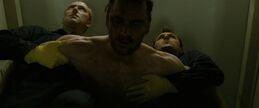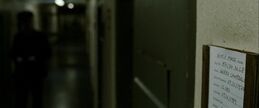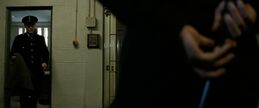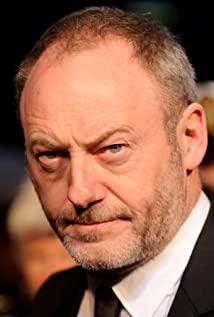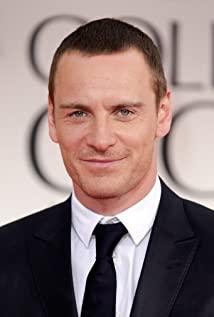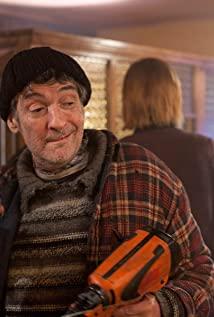The reason we need a movie, because we need to understand the world, to see the need for a get the world's attention, thinking and mood, and it is our world a secret parties, rather than the publisher initialed a paper contract. In this sense, "Hunger" is different from most movies produced in 2008. The film is at least honest and vivid, even profound and broad. The image world it builds will Pierce, warm or illuminate us like light.
What the film describes is a protest and demonstration by IRA prisoners in Metz Prison (better known as "H District") around 1981. From a purely political perspective, this confrontation between the government and the anti-government Republican Army is a confrontation between suppressors and rebels, and a "dialogue" for political discourse. The occurrence of "H Prison District" means that this "dialogue" is not equal from the beginning, and dignity no longer exists.
The film starts with the famous "Blanket Protest" and "No Cleaning" incidents. The cause of these two incidents was that the British authorities refused to recognize the IRA members as political prisoners and treated them as ordinary criminals or terrorists. "Blanket protest" is the first response of these prisoners to self-identification, because according to the Geneva Convention, political prisoners enjoy some rights, such as not wearing prison uniforms, and they have a more free prisoner life. Therefore, in order to keep warm, they wrapped blankets on their bodies to express a kind of protest. According to the “Guardian”, some of these prisoners had not worn clothes but were wrapped in blankets for four years. However, the "blanket protest" obviously did not work. In 1978, the "blanket protest" was upgraded to a "no cleaning" demonstration. The prisoners refused to wash, clean their hair, refused to use the toilet, smeared excrement on the wall, and discharged urine to the wall. The corridor of the prison. In the film, we see cramped and depressed cells in the filthy prisons, covered with feces, urine and rotten food, as well as creeping maggots that crawl out from time to time.
These two incidents were protests and demonstrations by the prisoners of the Northern Irish Republican Army who lacked identity to the authorities, and they were a way of physically expressing political will.
Physical expression outside the prison can be verbal attacks, street demonstrations, or violent activities such as "beating, smashing, and looting". Behind these various behaviors are thoughts and wishes. It is the appeal of interest. I think this is a kind of dialogue, a kind of dialogue under the interests of different subjects. Where there are different voices, discourse splits, collisions, and intersections, there will be dialogues, and it is a movement of thought that cannot be witnessed. Generally speaking, "any dialogue must start from the appearance of the "other"", and the "other" not only refers to others, but also includes the alienated self (do we express the nature of the self with our bodies?). Therefore, the basis of dialogue is the simultaneous satisfaction of the "alienated self" and the will of the "self."
However, the physical expression in the prison is, in a sense, a dialogue that loses the integrity of one's own will. It is based on the loss of one's material foundation, and puts oneself in a situation where the material and the spirit are attacked and defended without evidence. . This is obviously irrational but helpless. In the eyes of the authorities, it is tantamount to another violent provocation. The government has qualitatively determined this form of physical expression from the beginning, so this "dialogue" can only end in failure, and the process is extremely tragic. The recurring close-ups of the jailers' swollen joints in the film, and the fleshy shots of the prisoners' heads and the corners of their eyes are all unavoidable manifestations of conflict. The two shots of the jailer cleaning the wall and the floor of the corridor show that the body expression is not effective. These body expressions will only become the laughing stock of history, and the scars will be wiped out by history.
In this case, the prisoners can only seek a more extreme body language-hunger strike. That is to completely abandon the basis of "dialogue" and completely abandon the existence of self. Because only in this way can we regain a kind of "dialogue" equality, without considering the existence of the self, but only seeking the satisfaction of the alienated self. In the film, the director uses a 17-minute long lens to introduce the dialogue between the actor Bobby Sans and the priest, discussing the feasibility of the physical expression of hunger strike. The discussion of the dignity of life, the expression of the will to resist and the value of self-existence in the discourse are alarming. Beginning on March 1, 1981, Sanz began a hunger strike, becoming the first death of a hunger striker in this movement. In April, he was elected as a member of the House of Commons, and 100,000 people attended his funeral in Belfast. To commemorate this hero, Paris and Tehran both named a street after him, and the French government also boycotted Prince Charles' wedding. It should be said that Margaret Thatcher's position on the conflict in Northern Ireland was extremely firm, but she finally wrote about the dilemma in the body of Bobby Sans on hunger strike. So far, Northern Ireland is still in conflict. In March this year, Northern Ireland happened again. After the assassination of the British soldiers, the physical "dialogue" continued.
However, film director Steve McQueen does not care about politics. His position is neither on the side of the authorities nor on the side of Bobby Sans. In the first half hour of the film, the image is full of the trivial life scenes of the prison guards, showing the details of an ordinary person's life. When he was shot and killed without knowing it, the audience only sighed and pityed. There was no hatred for the executioner and no death to him. After that, Sanz fought in an almost crazy form. The dirty and foul-smelling room did not allow the audience to get close. Even if it was a long shot of dialogue with the priest, the fixed camera position indicated a kind of neutrality, a kind of coldness, and a kind of coldness. Rejecting any habitual injection of ideology, what we see is the domineering and domineering militants and the vows of a revolutionary to die. McQueen himself said, “As a West Indian immigrant, I don’t have any views on the issue of Northern Ireland... I am only interested in details that have not been recorded in history.” This is the keynote of the filming-the subtitles at the end of the film. Shang said that Sanz died after a 66-day hunger strike, and 16 prison guards died during the "blanket" and "no cleaning" protests. There are no comments and no comments on the right and wrong of this "dialogue".
Director McQueen is good at expressing a powerful and powerful physical shock using stagnant and calm visual language, which may stem from his identity as a visual artist. There was almost no dialogue in the first hour of the film, and it seemed to return to the simplicity and composure of the silent film era. The director focused on image narration and refused to join any other voices, focused on the in-depth development of a single form and rejected the horizontal expansion of civilians. This is film work. The joking about film techniques and the perseverance in artistic creation. In the film, we can see that what he emphasizes is the meaning expressed by the image itself, and what the image series express, a kind of artistic conception that is ready to emerge, a kind of human thinking that is separated from the trivial middle layer.
The description of the prison in the whole film is suffocating. The foul smell in the prison seems to be transmitted to everyone's nostrils through the lens, which constitutes the unique image landscape of the film "Hunger". The video landscape replaces the plot narrative. It is an important breakthrough in the film's narrative technique, giving the film an extremely typified and personal label. In addition, McQueen may be deeply influenced by Bresson and Bazin, and has a special fascination with close-ups and long shots. The calmness, depression, and gloom of the film are Bressonian, while the endless use of long shots Expressing Bazin's image philosophy, "Only a lens that is cold-eyed can return the world to its innocence." In the last twenty minutes of the film, a profound and serious record of the various changes in the body after the hunger strike. This is a big exclamation mark given to the audience by the film: the skeleton of the chest cavity, the sunken pits on both sides of the head, the atrophy of muscles, the shriveled skin, the difficulty of breathing, the drift of eyes...the language of the body, the decline of life, is terrible!
View more about Hunger reviews


